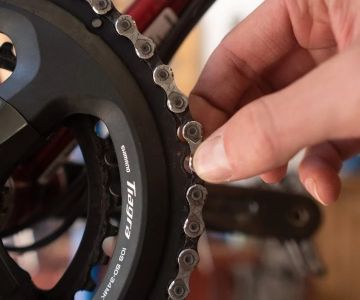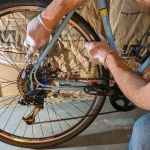
How to Avoid Shoulder and Neck Pain While Riding
- 1- Proper Bike Setup
- 2- Correct Riding Posture
- 3- Stretching Exercises Before and After Riding
- 4- Real-Life Examples of Preventing Shoulder and Neck Pain
1- Proper Bike Setup
One of the key factors in avoiding shoulder and neck pain while riding is ensuring your bike is properly set up for your body. Here’s what you need to check:
- Saddle Height: Your saddle should be at the right height to prevent excessive strain on your neck and shoulders. If it’s too high or low, you’ll be forced to stretch or bend in awkward positions, increasing the risk of pain.
- Handlebar Height: Adjust the handlebars so that you’re not reaching too far or hunching your back. The position of the handlebars can significantly impact your neck and shoulder strain.
- Seat Position: Ensure the saddle is level and that you are not too far forward or backward. A misaligned seat can force you to lean unnaturally, leading to discomfort in the shoulders and neck.
2- Correct Riding Posture
Your posture on the bike is just as important as the bike setup. Proper posture helps distribute your weight evenly and reduces strain on the neck and shoulders:
- Keep a Neutral Spine: Your back should be straight with a slight lean forward, but not hunched over. A neutral spine ensures that your weight is distributed properly without overloading your upper body.
- Relax Your Shoulders: Avoid shrugging your shoulders or keeping them tense while riding. Relaxing your shoulders helps alleviate unnecessary strain.
- Look Ahead: Focus on looking ahead while riding rather than down at the road. Tilting your head downward puts added strain on your neck muscles.
- Engage Your Core: Engaging your core muscles while riding helps maintain balance and supports your upper body, reducing the stress on your shoulders and neck.
3- Stretching Exercises Before and After Riding
Stretching is essential for maintaining flexibility and preventing muscle tightness that can lead to pain. Here are some effective exercises:
- Neck Stretches: Before riding, gently tilt your head from side to side and hold for 15-20 seconds to loosen up your neck muscles. This prepares your neck for the physical activity ahead.
- Shoulder Rolls: Roll your shoulders forward and backward in circular motions to relieve tension. This can be done before and after rides to keep the shoulder muscles relaxed.
- Upper Back Stretch: Reach your arms out in front of you and gently push your upper back forward, holding the stretch for 20 seconds. This helps release tightness in the shoulders and back.
4- Real-Life Examples of Preventing Shoulder and Neck Pain
Here are a few real-life examples of cyclists who have successfully avoided shoulder and neck pain by following proper techniques:
- Case Study 1: A long-distance cyclist who experienced frequent shoulder pain started paying closer attention to bike fit and posture. After adjusting the saddle and handlebars and focusing on maintaining a relaxed posture, the pain significantly reduced.
- Case Study 2: A weekend rider in a competitive group ride used regular stretching before and after each session. By incorporating neck and shoulder stretches into his routine, he managed to eliminate the discomfort he once felt after long rides.
- Case Study 3: A triathlete focused on core strength exercises and correct bike setup to avoid fatigue during long training sessions. The results were improved performance and less strain on her upper body during each ride.







 Crossing Cycle4.0 (46 reviews)
Crossing Cycle4.0 (46 reviews) Bike Science4.0 (119 reviews)
Bike Science4.0 (119 reviews) Stark Mountain Bike Works4.0 (10 reviews)
Stark Mountain Bike Works4.0 (10 reviews) Sprockets Bicycles and More4.0 (143 reviews)
Sprockets Bicycles and More4.0 (143 reviews) Bicycle World NY4.0 (599 reviews)
Bicycle World NY4.0 (599 reviews) Fetty's Cycle Service5.0 (89 reviews)
Fetty's Cycle Service5.0 (89 reviews) How to Teach Kids to Ride a Bike: A Step-by-Step Guide for Parents
How to Teach Kids to Ride a Bike: A Step-by-Step Guide for Parents Tips for Riding on Busy City Streets: Smart Strategies for Urban Cyclists
Tips for Riding on Busy City Streets: Smart Strategies for Urban Cyclists Best US National Parks for Mountain Biking: Ride Epic Trails Across America
Best US National Parks for Mountain Biking: Ride Epic Trails Across America Best Aero Helmets for Time Trials and Racing
Best Aero Helmets for Time Trials and Racing How to Clean and Lubricate Your Bike Chain Like a Pro
How to Clean and Lubricate Your Bike Chain Like a Pro 10 Must-Have Items for Long-Distance Cycling Trips
10 Must-Have Items for Long-Distance Cycling Trips